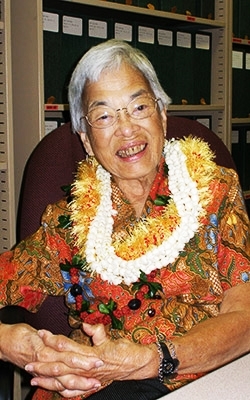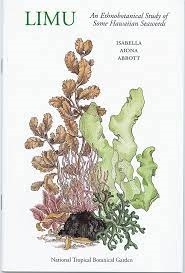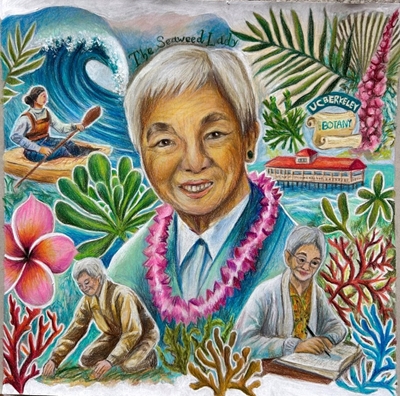Dr. Isabella Aiona Abbott (1919–2010) was a pioneering Hawaiian ethnobotanist, marine botanist, and educator whose groundbreaking work bridged science and Indigenous knowledge. Known as the “First Lady of Limu,” she was the first Native Hawaiian woman to earn a Ph.D. in science and became one of the world’s foremost experts on Pacific marine algae.
Born in Hana, Maui on June 20th, 1919, Isabella Kauakea Yau Yung Aiona grew up in Honolulu, near Waikiki where her mother introduced her to the cultural and culinary uses of limu (seaweed). This sparked a lifelong passion for marine plants. She graduated from Kamehameha Schools in 1937 and earned her B.A. in Botany from the University of Hawaiʻi at Mānoa in 1941, an M.S. from the University of Michigan in 1942, and a Ph.D. in Botany from the University of California, Berkeley in 1950 - becoming the first Native Hawaiian woman to receive a doctorate in science.
 Dr. Isabella Aiona AbbottWiki
Dr. Isabella Aiona AbbottWiki
She married zoologist Donald Putnam Abbott (1920–1986), who had been a fellow student at the University of Hawaiʻi as well as Berkeley. The couple moved to Pacific Grove, California where her husband taught at the Hopkins Marine Station run by Stanford University. Since women were rarely considered for academic posts at that time, she spent time raising her daughter, Annie Abbott Foerster, while studying the algae of the California coast. She adapted recipes to use the local bull kelp (Nereocystis) in foods such as cakes and pickles.
In 1966, she became a research associate and taught as a lecturer at Hopkins. She compiled a book on the Monterey Peninsula's marine algae, which was later expanded to include all of the California coast. She was awarded the Darbaker Prize by the Botanical Society of America in 1969. By 1972, Stanford University promoted her directly to full professor of Biology, where she was the first woman and first person of color in this position.
Dr. Abbott described over 200 species of algae, several of which were named in her honor, including the genera Abbottella and Isabbottia. Her works, such as Marine Algae of California and Marine Red Algae of the Hawaiian Islands, remain foundational texts in marine botany. She was also a passionate ethnobotanist, documenting traditional Hawaiian uses of plants in books like Lā‘au Hawai‘i: Traditional Hawaiian Uses of Plants and Limu: An Ethnobotanical Study of Some Hawaiian Seaweeds.
 Amazon'Limu'
Amazon'Limu'
In 1972, Dr. Abbott became the first woman and first person of color to be appointed as a full professor in Stanford University’s Department of Biology. After retiring in 1982, she returned to Hawaiʻi, where she taught ethnobotany at the University of Hawaiʻi at Mānoa and helped establish its undergraduate program in the field. She earned numerous accolades, including the Gilbert Morgan Smith Medal from the National Academy of Sciences in 1997 and recognition as a Living Treasure of Hawaiʻi in 2005.
Dr. Abbott’s work was instrumental in preserving and revitalizing Native Hawaiian knowledge of marine ecosystems. She emphasized the importance of integrating traditional ecological knowledge with modern science, advocating for the recognition of Indigenous practices in environmental stewardship.
Enjoy this portrait by Elizabeth Guenkine, a finalist in the MY HERO and Robert Shetterly Portrait Competition 2025:

Read about Elizabeth's inspiration here: myhero.com/the-seaweed-scholar-a-tribute-to-dr-isabella-aiona-abbott
Page created on 5/20/2025 9:23:53 AM
Last edited 5/20/2025 5:34:58 PM
